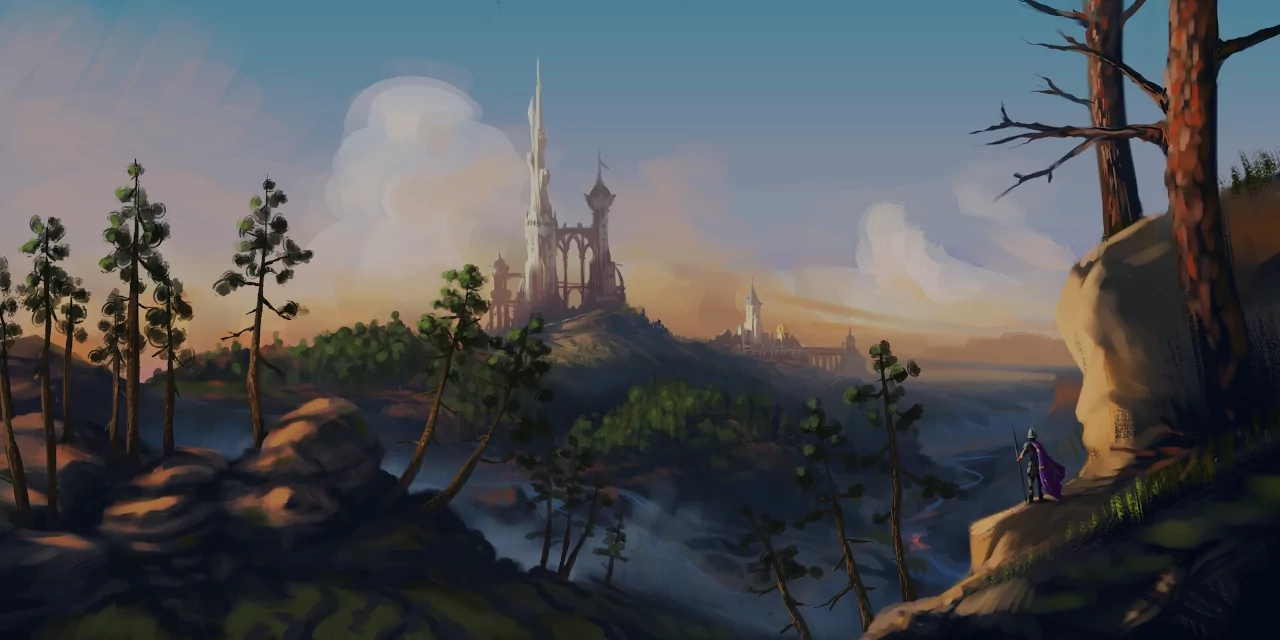Philipp Urlich made a bit of a splash recently in the Krita community with immersive landscapes and experimental use of NVIDIA’s GauGAN-generated images as the basis for new artworks. He was kind enough to agree having his works featured on LGW and answer a few questions.
Hello, Philipp! Could you please tell me a little about yourself and your artistic background?
Philipp Urlich: I’m 44 years old and live in Switzerland with my beautiful wife and two daughters.
I think my mom was the trigger to get it all started. She was painting traditional deco art, painting old wooden wardrobes and cabinets when I was like 4-5 years old. Some pencil sketches of flowers and portraits. There were these interesting series of „teaching how to draw books“ she had from a remote art school in England, and I was utterly impressed by some of the sketches in there.
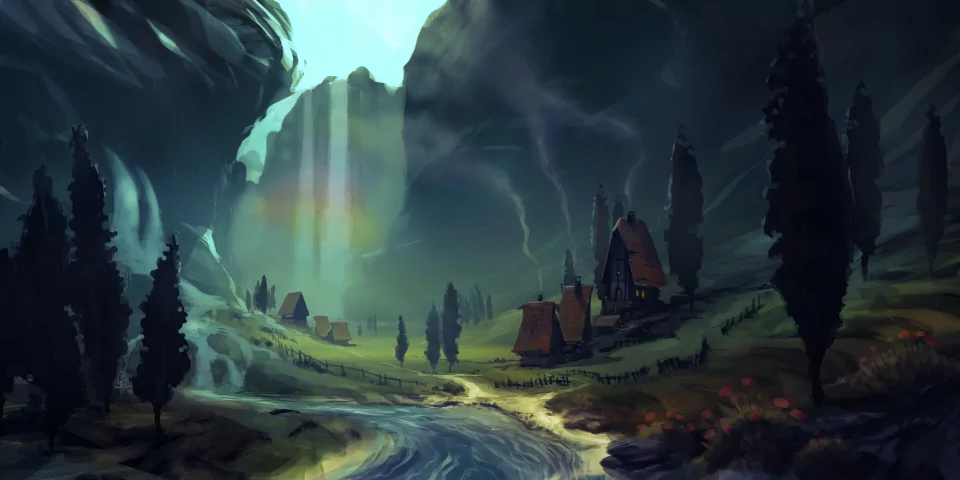
Settlers
I have a graphical design background and had traditional training in many different disciplines, such as drawing and fine art, photography, sculpting, even letterpress and typography. It was the time computers and the first photoshop started playing a role. But there was no internet yet.
The 1 year pre-course art school maybe was the best time I ever had. Where I learned about art history and all the old numerous masters like you name it. Learned about composition, colors and shapes.
As life goes, I wasn’t really seriously drawing or painting anymore for almost 20 years and just started a couple months ago (March 2019) again with my new tablet.
My impression from looking at your ArtStation profile is that you paint environments a lot more than anything else. What’s the most fascinating part about them for you?
Philipp Urlich: Because landscapes or environments are very immersive. It’s a window to another world.
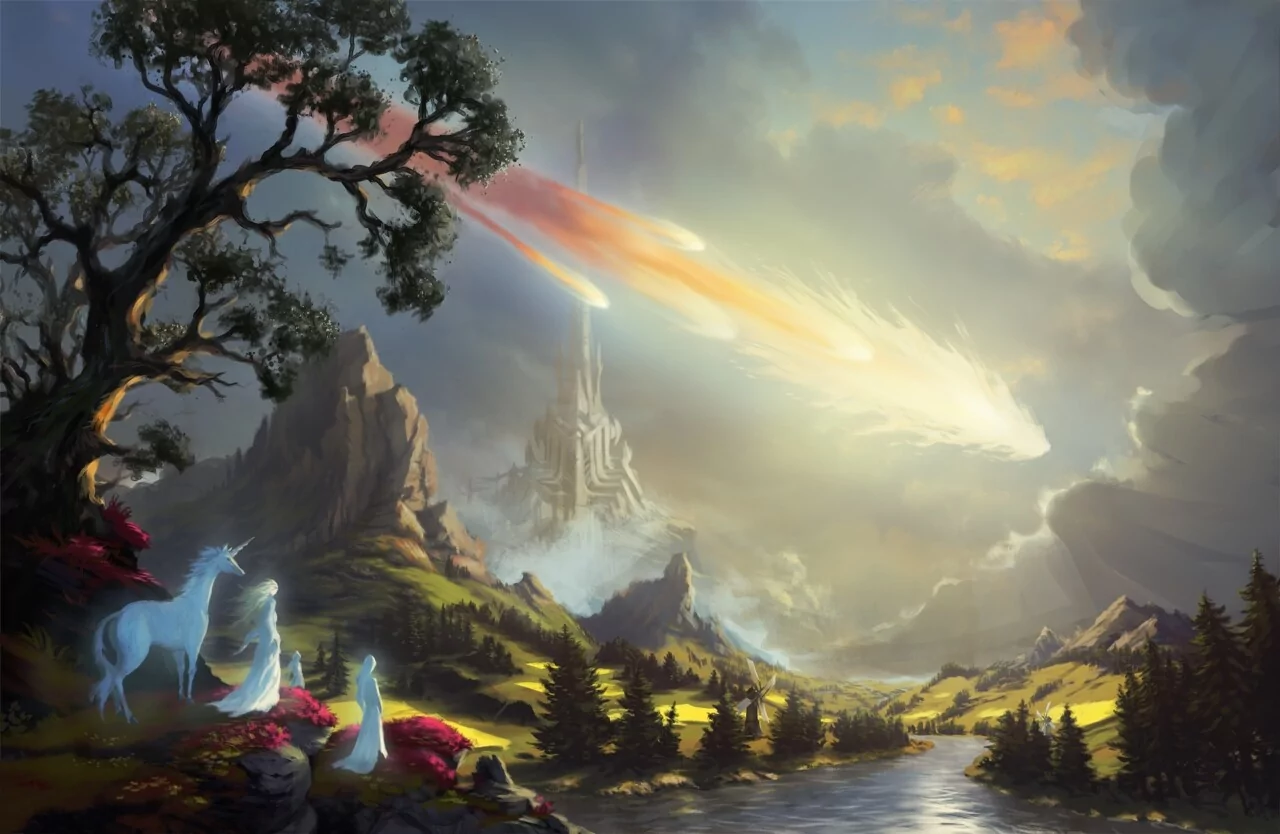
The Cataclysm
I’m still in a phase to find my workflow. Try out different styles, techniques and try to experiment. Landscapes are for me the easiest way to do it and I just love landscapes.
I’m still trying out things while getting into it again. I feel landscapes give me a lot of freedom to mess around with bold shapes and colors and not losing myself on too much details. I just love nature.
What’s your usual trigger for new ideas?
Philipp Urlich: Sometimes I have this idea and I try to visualize it. Sometimes I use inspiration I had seeing in nature, in an image or reading or hearing something. Often I just start chaos modeling shapes and let it do things for me. I currently never use references.
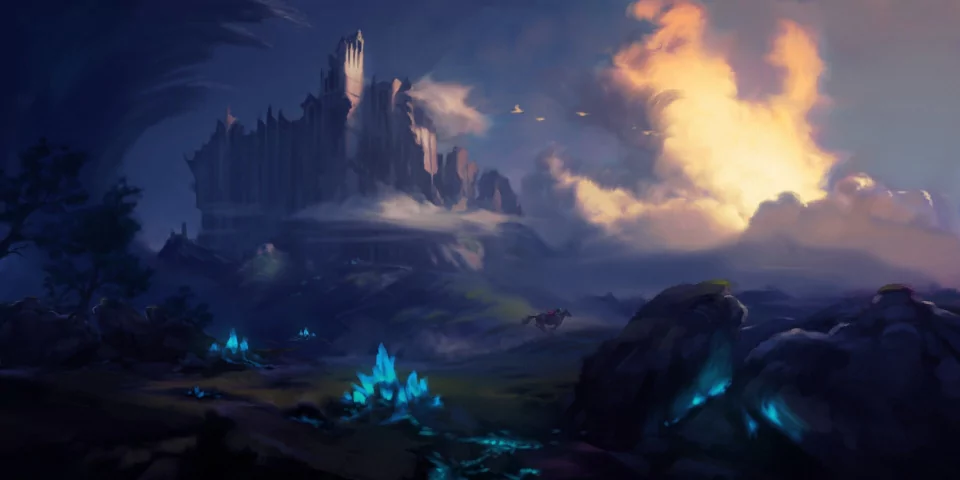
The Great Wave
Just a few days ago, I read a great interview with Robert Del Naja of Massive Attack that covers quite a few topics regarding the use of technology such as neural networks by the band.
Part of his reply on AI boils down to this: an algorithm can generate “surprises” that contribute to the final record in a way that bloopers can affect the songwriting process and get musicians to do something entirely different. And, specifically, he says this: “Great artists can now steal with algorithms”.
Some of your recent artworks use NVIDIA GauGAN-generated environments as the first step. Does Robert’s point of view apply to digital painting in any way, in your opinion? What’s your personal experience with GauGAN?
Philipp Urlich: Very interesting question indeed.
„Good artists imitate, great artists steal.“ - Picasso. I think it applies to all art forms. To get out of the usual habits and create something new. There’s currently also this interesting discussion going on whether generative computer art is real „personal“ art and can be sold as that. What is it?
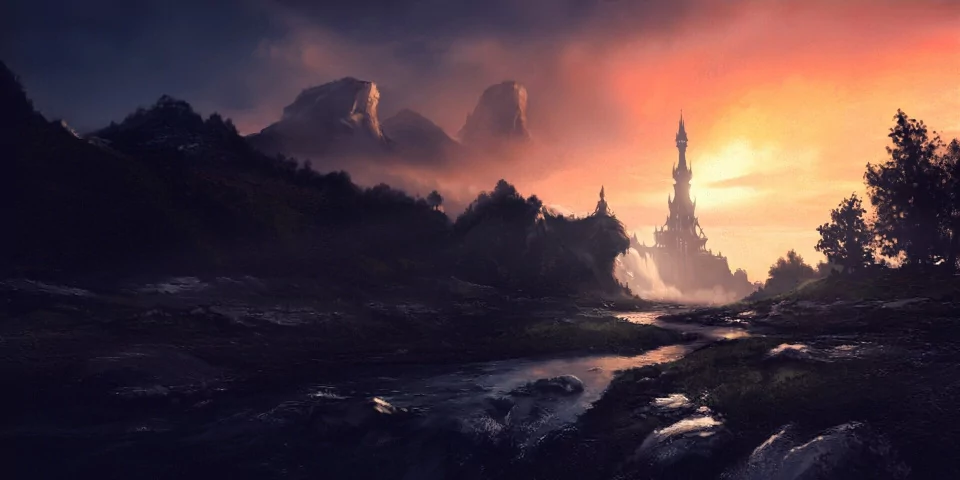
Galioth
What if you never knew there was a machine behind it? I think what Naja also meant was that great artists can now steal from a machine so nobody can say „hey you copied Artist X!“. Or it’s just another tool to break out of things. Ever played with dices to create something random or moires or photographs blended together? How are sound effect engineers doing their sound effects?
It’s true and ever been like this. Artists look for new ways to get out of their usual loop and this new area of AI is just one tool out of many. As I mentioned in the previous answer, it’s a common technique to draw something random chaotic to get to new inspiration for shapes and what not. Our brain works for that just as well. Happy accidents. Sometimes just a new special brush can ignite something.

Visitors
I think in the way of quickly producing material for ideas, prototyping and inspiration, it can be a great helper. GAN is still in its baby age and maybe we will see a lot of improvements in what can be done. GauGAN is a nice tool but it has its limits, and the artist is the initiator that has to do the input. What if there’s also AI that creates segmentation maps for input?
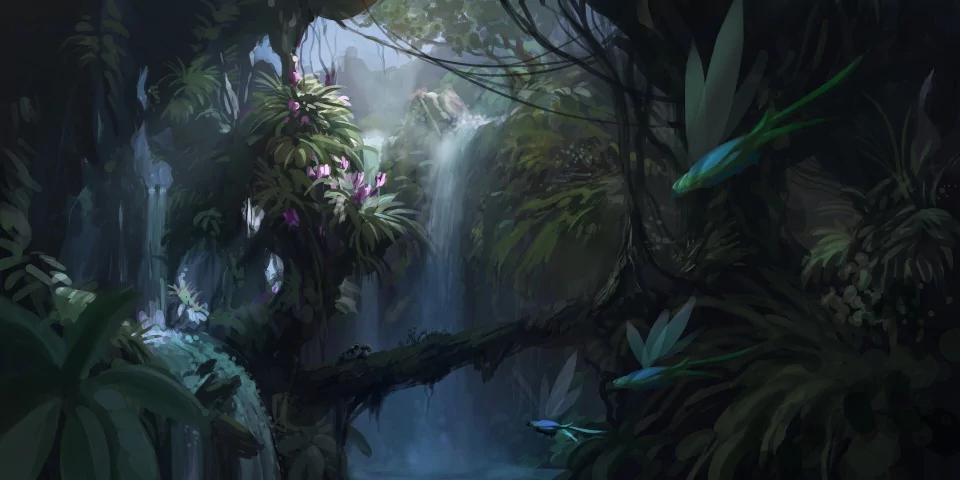
On a sunny day
Wouldn’t it require someone to at least generate some requirements for AI to start with? So we would still have a human behind artworks?
Yeah, I think of it as a random generator of shapes for landscapes with a trained AI. It could also be a mix of where you define where a key element like a river or mountain would and the AI completes it.
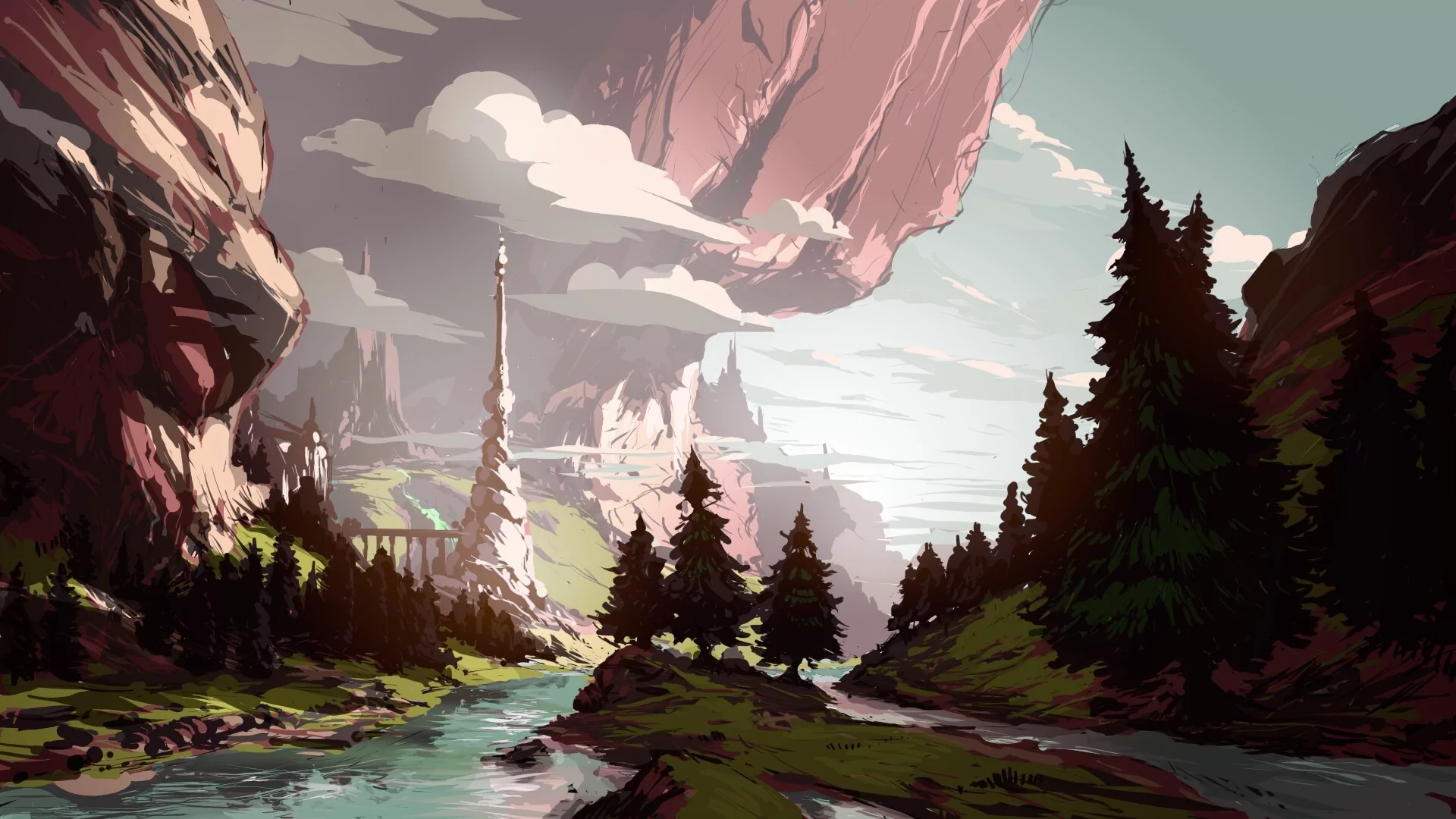
Tree brothers
How did you discover Krita and what were the features that got you to stick with the software?
Philipp Urlich: I think it was around 2017. I was just looking once again for alternatives to Photoshop and the other painting tools and was surprised by how many features it has, like animation, layers, and brush engines. It’s all there and the interface is simple and intuitive. I fell in love on first try so to say.
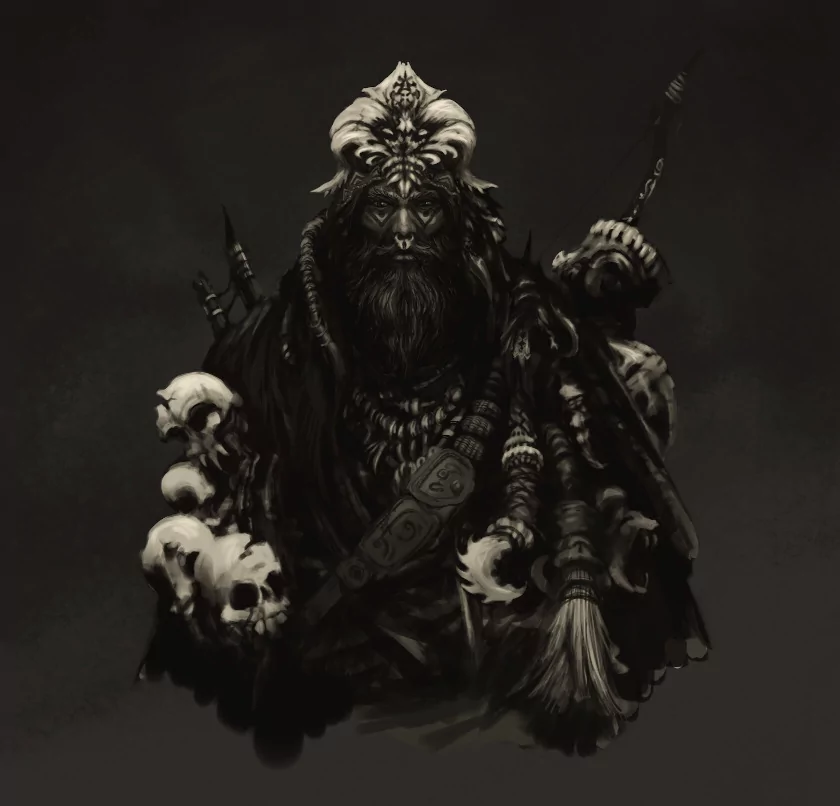
Hunter
My most used features are color pickers and E (eraser). Most importantly — when switching to Eraser, the selected brush has to stay the same (hello Ps).

Coming home
What are the things that you’d love Krita developers to improve/add?
Philipp Urlich: Performance and stability is always something that can be improved and they did a lot recently. There’s work arounds for many things if you work on large image sizes. Other than that, I can’t think of any currently.
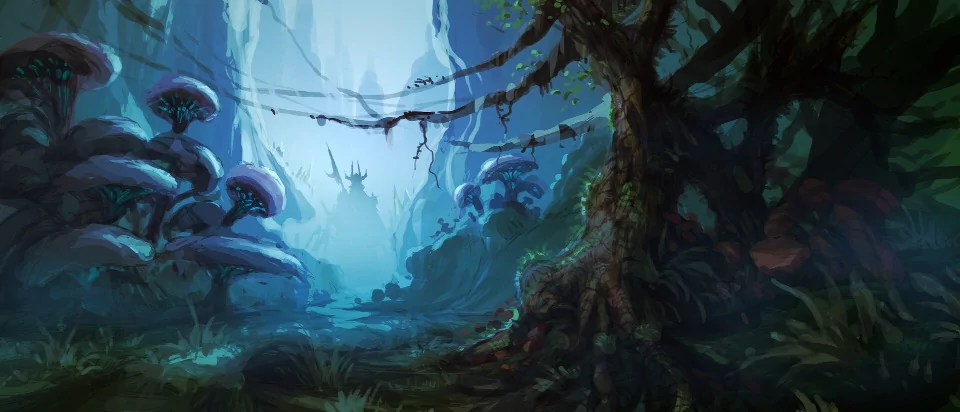
Trance
Who are some of the artists you look up to?
Philipp Urlich: There’s many, just a few: Frazetta, Moebius, Degas, Sargent, R. Schmid, A. Bierstadt, Schischkin, Waterhouse, Jean L. Gerome.
Patreon subscribers get early access to my posts. If you are feeling generous, you can also make a one-time donation on BuyMeACoffee.
